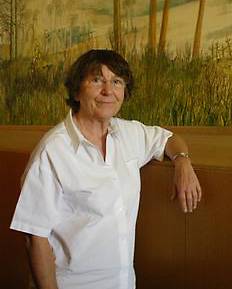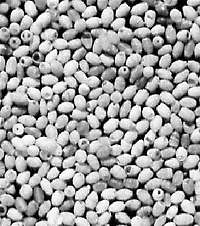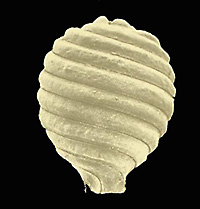
Ingeborg Soulie-Marsche

Ingeborg's objective was to investigate modern and fossil Charophytes, including the abundant material left by Horn af Rantzien (1959). First, I she characterised particular, especially Nordic, extant species through the morphology of their gyrogonites. This is a pre-requisite for the identification of modern species in the fossil state. It enabled using the ecological data known for the living Characeae to infer paleoecological conditions (such as depth, temperature, salinity) of paleolakes when only gyrogonites are available. Second, she traced back the living taxa into the geologic past with the aim to provide information about the phylogenetic roots of modern species.
Project summary
Charophyte fructifications as a reference for palaeo-limnology
Charophytes (class Charales) are aquatic macrophytes that form calcified reproductive organs, termed gyrogonites. Through these typical microfossils (0.2 - 1.2 mm in size), the group is known since the Upper Silurian (425 Ma ago). The botanical systematics is entirely based on vegetative features, which are not preserved in the fossil state. Hence there is a need for referencing the gyrogonites of the modern species.
My current research is to make a determination manual and atlas of the fructifications of living species of the Charophytes in order to utilize their morphology for the correct determination of fossil charophyte gyrogonites.
The most important work about this aspect was published by H. Horn af Rantzien (1959). His invaluable material is archived at NRM (both in the botanical and paleobotanical Department) and has not been studied since then. Within the frame of SYNTHESYS, my visit of 3-4 weeks would allow me to re-examine these collections and :
- provide new illustrations, because modern techniques of SEM-microscopy, not available in 1959, permit the documentation of greater details on the specimens;
- update the systematics according to the revised classification of charophytes worldwide by Wood & Imahori 1964/65;
- re-determine the fossil charophytes because new, additional criteria for determination are in use now (i.e. the distinction of single and composite basal plate) that were not considered at the time when Horn af Rantzien did his studies.

Charophyte gyrogonites occur abundantly in lacustrine deposits; the population shown here was picked out from the sediment after washing and sieving.

SEM images showing gyrogonites of genus Chara from the Late Pleistocene, c. 14,000 ys ago. Scale bar is 300 µm.
Furthermore, I am also interested in the NRM plant collections from high latitudes to help solve questions about the life cycle of aquatic plants in Polar regions. These investigations will complete previous data, which were mostly from southern European regions and North Africa.
NRM holds the invaluable collection of Charophyte fructifications from both living and fossil species, including holotypes of taxa published by H. Horn af Rantzien (1959). Collections from high latitudes held at the Department of Cryptogamic Botany will provide reference material to characterise Charophyte fructifications from Nordic regions.

Gyrogonite of the boreal genus Nitellopsis, that is documented from the fossil record since the Early Tertiary.
Early Contact with my future host at the Palaeobotany Department (Dr. EM Friis) confirmed the existence of abundant material and the interest of NRM to have the collections restudied.
I´m very happy about access to the NRM facilities because, given the size of the objects, Charophyte gyrogonites need SEM-photographs to be shown correctly. Further, the project aims at studying structural details (magnification about x 3000) that can not be seen without SEM.
Perspectives
Identifying the boreal species from their gyrogonites in sediments opens the way for collaboration within pluri-disciplinary pan-European projects about Quaternary environmental change in Nordic regions, similar to the programs I have co-operated with for North Africa.


